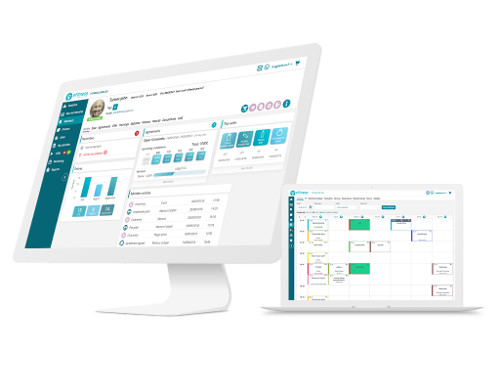Britain woke up recently to 4 more years of a Blue Tory Government. Although it was reported as a landslide, the country still felt as divided as ever. While some were thrilled by Boris Johnson’s election victory, others were left bitterly disappointed that a man who had the audacity to hide in a fridge in order to avoid appearing on a tv show, was announced as the new leader. The aftermath has seen many opposing supporters, including Jeremy Corbyn himself, blame the mass media for his defeat.
But your articles are about Health Clubs? What on earth has British Politics got to do with anything? Well, the General Election provides a great example of people on mass responding to change, and that’s what today’s post is all about!
The Change Curve
The Change Curve is the model that I shall refer to today. This is a widely recognised framework and is used by businesses all around the world to help employees understand stages of transition, evolution and as the name implies, change. The model predicts how people may respond to change, and allows organisations, including Health Clubs, to brace themselves for what may lie ahead.
So what is it that underpins how a person will respond to change? Well, I’ve previously talked about ‘personalities’ in terms of colour codes, I’ve also illustrated the clear differences between those who possess a ‘Need to Achieve Success’ mindset versus those who hold a ‘Need to Avoid Failure’ mentality. Both posts are extremely insightful in demonstrating how certain types of people react differently to situations depending on their emotional make-up, so it’s no surprise that when faced with the prospect of ‘change’, it is an individual’s personality which plays a pivotal role in how they handle it.
Thankfully, if a leader or a manager is aware of such personality types, and the ‘Change Curve’ model, then they are much better positioned to adopt the correct leadership and management style. The idea is that an employee can transition from early reluctance towards a change to eventually supporting it.
The Change Curve model outlines six stages the majority of people go through as they become accustomed to changes.
So let’s use this as a scenario.
You are a Health Club, you’ve looked at your Personal Training model, and you’ve realised that there is a disconnect between the Personal Trainers on the gym floor, your brand and your members and something is not quite right – the customer experience is being compromised as a result. After researching other models, you decide to switch your model, now, you are recruiting ‘employed Personal Trainers’ and the Self-Employed Personal Trainer model will no longer be supported.
You have made what feels like a genuine effort to ensure all your fitness team has undergone the right training and development to make this work with customer experience being your major focus, yet three months down the line, you see your staff members start to slip back into old habits, the employed Personal Trainers are not any happier because they are not attracting enough clients to justify their salary and if anything, the customer experience is worse than before.
Now let’s review this particular scenario, paying attention to each Stage in the Change Curve.
Stage 1
This stage happens when a change is first implemented. Typically, a person’s initial reaction is one of shock or denial. Often this can lead to people blaming other people and other things.
If we apply this to our scenario around the shift in Personal Training Model, we may see many Personal Trainers not convinced by the announcement. The previously successful Personal Trainers who were generating large sums of money under the Self-Employed model may initially pack up and leave, telling all their clients that the company is to blame ‘as they are only concerned about money and nothing else’, when the reality is the main reason behind the change is to improve customer experience, not to generate more income. This reaction displays denial.
Stage 2
When people move to Stage 2, they start to become more critical of themselves. This is not a pleasant stage for a person to be going through.
Some of the lesser successful Personal Trainers may feel their job is at threat if they know that the only reason they were able to attract clients when self-employed was due to their excessive undercutting of competition, in this case, they may initially blame the company for the change saying ‘prices are increased’ to protect their ego, but deep down they feel they might let the company down if they stay and not have the confidence to charge sessions at the normal rate.
Many people can go back and forth from Stage 1 to 2, blaming others and blaming themselves, however, sadly, as long as people continue to resist change and show no signs of progressing from Stages 1 and Stage 2, positive change will not take effect.
Stage 3
At this stage, confusion sets in. Although this is at the lowest point of the ‘Change Curve’, it’s viewed as a good sign as people are beginning to move on.
The Personal Trainer may ask questions such as;
- Do I stay with the company as an employed Personal Trainer?
- How might these changes affect the way I work?
- How do I ensure I personally improve my customer experience?
- How do I make sure I attract enough clients to make this work?
While, at this stage, the Personal Trainer is still not happy, because they’ve started thinking beyond simply denying and blaming others, they are a step closer to accepting the change.
In Stages 1, 2 and 3 it’s really important to listen to people one on one. Let them vent individually and don’t react. When you launch a change in a group meeting, it can often backfire. Only once people have come to terms with changes should any ‘group’ thinking take place. When you meet one on one, explain exactly what is going to happen and the reason behind the change. If you’ve prepared properly for the change, you’ll know exactly what the steps to success look like – share this with everyone you talk to.
Stage 4
In the next stage, acceptance takes place. Here, people start to let go of what they have lost and prepare for change.
For example, the Personal Trainer may now start drawing up a Cash Flow Forecast and a Target Sheet to really understand how many clients they need to attract with the new model. They may start speaking with other Personal Trainers about how they will manage the change. They are ready for it!
The issue is here, input from others who are not in the same position of the Change Curve can influence a negative reaction and it can cause people to slide backwards into Stage 3, so for Health Clubs, this stage is all about getting employees, and in this case Personal Trainers to progress to Stage 5.
Stage 5
At Stage 5, people don’t just accept the change, but they welcome it and start to embrace it.
The Personal Trainer in this Stage of Change may spend time reading books and watching YouTube videos on how to improve their own customer experience levels. They may ask their General Manager for regular meetings so they have someone to be accountable to around any areas of weaknesses, rather than shying away from responsibility.
It’s only when people get this to stage will an organisation, and in this case a Health Club, will start to see any real benefits of change.
Throughout Stages 4 and 5, you should consider arranging seminars, meetings and workshops to demonstrate all the processes involved and collectively work together to engage as many people as possible. Just ensure that those involved are all in the same mindset and the same stage in the Change Curve.
Stage 6
Stage 6 is the final stage people reach. Here, everything is starting to become ‘routine’ and individuals have a stronger awareness of how to respond to future change.
The Personal Trainer, in this case, may receive regular acknowledgement for their improvement in customer experience. Simultaneously, they may be topping the tables for the most Personal Training packages sold.
As a manager leading the change, you might see your overall ‘NPS’ scores rise related to atmosphere and service on the gym floor, you may see happier members and most importantly, there is absolutely no disconnect between the brand, the trainer and the member. Everything is how you envisaged it and you are now in a much better place from a retention perspective.
Make sure that you capture the learnings in Stage 6, and highlight any successes in your future meetings and on team building days. This will evidence that change can be positive for your company and you will encounter less friction next time you decide to implement your next big idea.
Summarising comments on the Change Curve
Unless your Health Club managers and leaders actively assist in moving others through the stages of the curve, then individuals may never progress from Stage 1 or 2. The more team members you have who are stuck in Stage 1 or 2, the less likely it is that the ‘change’ will be successful. You can alter, tweak, adjust and replace as many systems and processes as you like but only when the people within your organisation accept and adapt to such modifications will you actually witness a real transformational ‘change’.
Just like your members, each of your team members have preferred communication methods and learning styles so it’s vital to understand the personality of each team member to support them through the process of change.
Ultimately, as a leader within your Health Club, your challenge is to support others through such transitions, which can be tough if you are not already ahead of the curve yourself. It can lead to a loss of power and respect if a senior figure appears to be resistant to the change of the company, so make sure that you are in the right frame of mind to make this journey better for your team, and the quicker you can get through the stages of change, with no relapse, the more successful your Health Club will be.
Oh, and take note, Boris.


